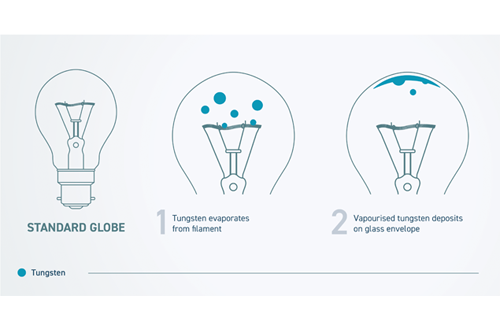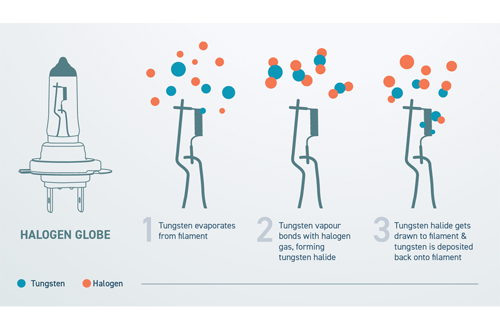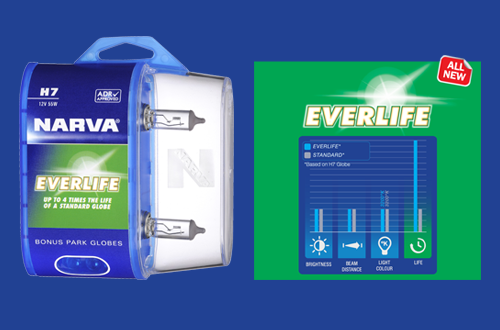
The halogen globe is the most widely used form of lighting in the automotive space today. It has been the global standard since its introduction in 1962 with the “H1” style headlight. The enduring popularity of the halogen globes are due to their cost effectiveness and efficiencies in power draw, and the fact that they are relative safe and easy to change.
A halogen globe is slightly different to the standard electric light globe that you would find in your home. A standard incandescent bulb is made up of a tungsten filament surrounded by a gas such as argon and/or nitrogen inside a thin piece of glass (which makes up the globe shape). Just like any other metal, when heated the tungsten gets “white hot” and emits a bright light.
The problem with standard tungsten bulbs is that, during operation, tungsten slowly evaporates from the burning filament and deposits on the glass bulb, leaving a black mark. This process decreases light output and reduces the life of the bulb. This means that they are not suitable for automotive or marine use, as these globes are naturally required to have a long life and be reliable.

A halogen globe still uses a tungsten filament, but it is encased within a small glass envelope which is filled with gas from the halogen group, such as Bromine or Iodine. The interesting thing about halogen gases is that they effectively recycle the evaporated tungsten. When the globe is on, the halogen gas combines with the tungsten particles and deposits them back onto the filament. This helps extend the life of the globe and means that the tungsten filament can run a lot hotter without risk of burn-out. Thus, halogen lights can be much brighter (as seen in our Performance Globe range), making them perfect for night driving.

High performance, long-life globes such as Narva’s Everlife Performance Globes (with up to 4x the life of a standard globe) add extra gases to ensure the life of the globe. These gases included Xenon, Argon, Radon and other larger inert gases which protect the filament in two ways. Firstly, they make the halogen reaction more efficient thus resulting in less tungsten being lost into the envelope. Secondly, they make the filament less likely to evaporate as they increase the pressure within the envelope and act a bit like bubble wrap for the filament. If a performance globe used the same gas composition and pressure as a standard globe, it would last for just a few days. The main reason these performance globes are so much more expensive compared to a standard globe, is that many use pure Xenon which is the largest and most effective gas.

While halogen globes have been the standard for quite a while and are well respected in their design, technology over the past 10-15 years has seen some amazing advancements in automotive lighting technology with the introduction of Xenon HID and (more recently) LED technologies.
This article is brought to you by Mechanic.com.au Premier Community Partner NARVA